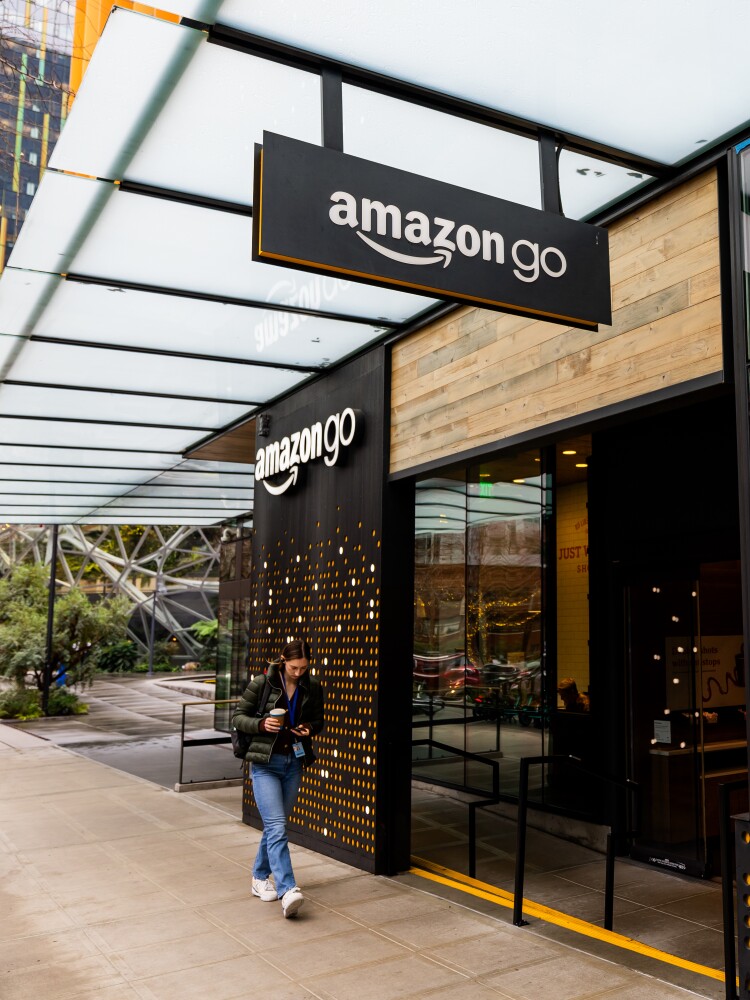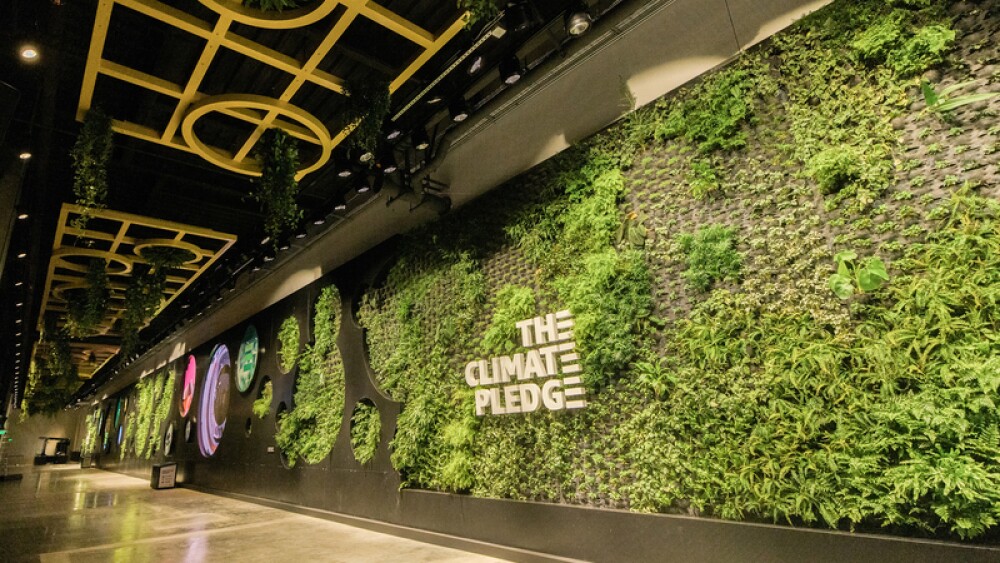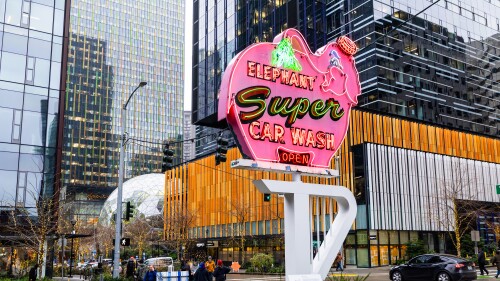
On 7th Avenue you’ll notice the Amazon Go Store, which uses Amazon’s “Just Walk Out” technology to create a “grab and go” shopping experience. At Amazon we have a process called “working backwards”. When we want to build something new, we start with the customer challenge or opportunity. In the case of the Go Store the challenge was simple. As Dilip Kumar (VP of AWS Applications) said: “We wanted customers to be able to walk in, take stuff, and just...leave.”
The Go Store is a great example of Amazon having a customer-centric vision and an unwillingness to compromise. You’re looking at the first Go Store ever created! This store was opened just 13 months after Amazon Engineers showed the technology to Amazon employees. You’ll see Go Stores popping up all over the world - even at Seattle’s own Climate Pledge Arena, home of the Kraken!
A common question we get around campus is where do all of these employees eat! Inside most buildings is a restaurant for employees. Those restaurants are designed to only host 30% of the employees working in that building - and that’s on purpose! We want our employees to go out into the community and grab coffee or food from local retailers. This is one of the many ways we help create economic vibrancy in our neighborhood and support local businesses.
Amazon’s Real Estate team seeks out retailers that match the Amazon spirit of insisting on the highest standards and being socially responsible. John Schoettler, Amazon’s VP of Global Real Estate and Facilities, has explained our philosophy using these words: “Our goal was never to build a campus just for our employees, but to create a neighborhood where people want to go to and not drive through.” We could have decided to build our campus in the suburbs, looking inwards and just building amenities for our own employees, but we opted to be in downtown and help revitalize a neighborhood like South Lake Union, bringing new life to the city and creating new opportunities for local residents.
During the pandemic, when our 55,000 Seattle-based employees were working from home, we immediately (in just four days!) created the Amazon Neighborhood Small Business Relief Fund to provide grants and free rents to the local businesses across our Puget Sound campus. We invested $19 million dollars to make sure they stayed afloat and were ready to come back when the situation improved.
Back in 2020, while the world was coping with the COVID-19 pandemic, Amazon and Mary’s Place quietly opened a shelter for families experiencing homelessness inside a building originally intended to be used as offices in downtown Seattle. In this eight story building, Mary’s Place provides safe shelter, housing resources, and community for 200 family members experiencing homelessness.
Since opening, it has provided 156,000+ bed nights for families. Families have their own private rooms, common areas throughout the shelter provides space for families to meet with housing and employment specialists and spend time together, and a rooftop deck allows children to play outside safely. Amazon employees based in Seattle often volunteer at Mary’s Place serving meals or helping guests polish their resumes and prepare for job interviews.
Now, in 2024, with our offices brimming with employees again and people returning downtown, Amazon is proud to report an 82% increase in South Lake Union foot traffic as well as an 86% increase in credit card transactions. These numbers represent the difference between various periods during the pandemic and May 2023 as we started welcoming Amazonians back to the office.
Looking at the gardens down 7th Avenue, a row of Accolade and Princeton elm trees line the street. Both varieties are resistant to Dutch elm disease, an invasive fungal pathogen accidentally introduced to the United States in 1928 that has devastated native elm populations. These hardy elms provide a cool pathway that guides you through the downtown corridor. Planting new trees is one of the most effective ways to reduce atmospheric carbon dioxide and other pollutants while helping to keep our urban streets cooler in the summer months.

A living wall at The Climate Pledge Arena, named by Amazon in 2020 in honor of The Climate Pledge
In 2019, Amazon co-founded the Climate Pledge Agreement. We at Amazon believe we have an obligation to stop climate change, and reducing carbon emissions to zero will have a big impact. Amazon is striving to reach net-zero carbon emissions by 2040 and we are currently on the path to powering 100% of our global operations with renewable energy by 2025. One example of our commitment is our recapture and reuse of “waste heat” from a nearby non-Amazon data center. The “Westin Building Exchange” houses more than 250 telecom and internet companies and they had heat to share! Amazon arranged to capture this heat into our central plant below Doppler. The heat runs through five heat-reclaiming chillers to concentrate the heat into a smaller volume of water raising the temperature to 130 degrees Fahrenheit and then distributing that heat through our buildings. For the coldest days we have back-up boilers but since this system has been in place you might find it surprising to know that we very rarely need to use them. Recycling excess energy from the Westin Building Exchange will save some 80 million kilowatt hours of electricity use over 25 years—an amount equivalent to the carbon dioxide emissions of 65 million pounds of coal.







